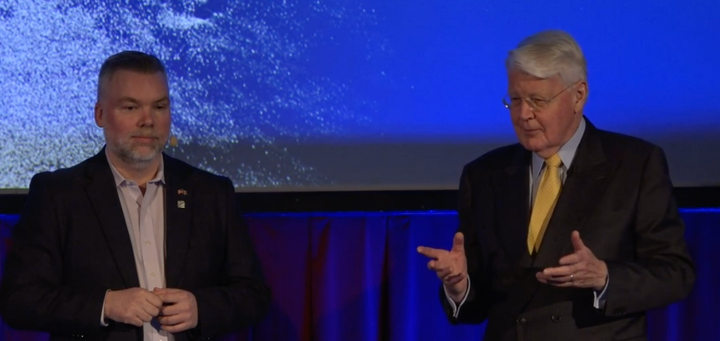How Icelandic startup Takumi is building a marketplace from scratch

Takumi is an Icelandic / British startup founded in May 2015. We launched in October 2015 and have been growing at a healthy rate in the United Kingdom. We feel like we have good momentum and are planning a launch in Germany this year, EU’s second biggest advertiser market. Takumi automates influencer marketing and makes it easy for Instagrammers and brands to work together.
We pay out around £10k to Instagram users every week for their work on our platform. Influencers don’t lend out rooms like on Airbnb, or give people rides like on Uber. What they get paid for is their creativity and voice on social media. Takumi has some features of a platform marketplace, but buyers are sold in by a traditional sales team. Now that we have some experience running a part SaaS, part platform company we thought we’d share some lessons.
One particularly challenging day, my co-founder Marc Andreessen said to me: “Do you know the best thing about starting a company?” I looked at him in disbelief as if to say: “there is a ‘best’ part?” He replied: “You only ever experience two emotions: euphoria and terror. And I find that lack of sleep enhances them both.”
— The Hard Thing About Hard Things (which is as good as everyone says it is)
Startup culture has too much hyperbole. Quotes like the one above, as good as it is, make it sound like starting your own company isn’t basically a privilege of people in rich countries. That being said, we related to the part about euphoria and terror. I’ve had days where I didn’t just have crippling doubts about our idea, but was convinced we were about to lay everyone off within three months. Those moments are not just scary but depressing. Recovering from those lows is not a process but a flip of a switch. Often this happens within 24 hours. It can be intense.
At Takumi we define success by having sustained marketplace traction. That challenge repeats itself in every geography we enter however. Uber has recently called it quits in China because of fierce competition. Many on-demand startups have surrendered to grueling economics and a tightrope of worker regulation. Setting economics, regulation and geographies aside the core challenge of marketplaces is traction; increased supply and demand in lockstep.
Components of Traction
The main challenge of a marketplace startup isn’t so much the technology but making sure demand and supply are increasing over time and that buyers and sellers are coming back to transact again. We separated the problem into three distinct areas to tackle:
- Minimum viable supply (“A good start”): before you open the doors you have to decide what the minimum viable offering looks like. Is it better to start with a list of suppliers (like Uber launching with drivers ready) or buyers? We decided to launch with buyers lined up. For us it meant shipping our app with a selection of brand campaigns so when Instagrammers signed up they had a good first impression.
- Retained and vetted suppliers: Giving the good suppliers a good experience is important so you don’t churn out suppliers too quickly. Most marketplace platforms have varying supplier quality. We had this experience too, and to this date we still block the majority of “influencers” because of fake followers or related issues which would erode buyer trust. Getting that process right can take a while and depends on your access to quality data. A key to standardised pricing is having quality guarantees instead of letting suppliers set their own prices. In this regard we are closer to Uber than Airbnb.
- Buyer pipeline: Building a pipeline of buyers takes time and is the result of effective sales and marketing, managing their expectations and getting the pricing right. We knew our product wasn’t going to sell itself and we’d need a good presence close to our buyers.
This was the route we chose for bootstrapping our supply and demand relationship. The details may differ for each industry or segment, but the core problem of traction remains the same: a functioning marketplace needs both supply and demand.
Pricing
We didn’t get pricing right on day one. We began by selling what is essentially campaign reach; the aggregate number of Instagram users reached by the influencers that get offered and choose to participate in a campaign. Because of the way we match influencers with brands on a first-come-first-serve basis we could not predict the total number of influencers participating in campaigns and budgets would yield an unknown number of photos, but a more or less predictable reach. Reach would still fluctuate somewhat because we would guarantee at least £40 in payments to each influencers. All in all; brands didn’t fully know what they were getting for their money.
To explain how we changed our pricing it’s important to understand what we are changing in the influencer marketing industry. Influencer marketing has historically been encumbered with laborious negotiations with each influencer. Takumi eschews this step with standard pricing based on influencer performance and reach. We would pitch brands on great influencers and powerful impressions but quickly get into complicated discussions about minimum guarantees and average reach. We needed to simplify our offering. We started rethinking our pricing and ended up with a model where brands pay a fee per post. We could not have done this ahead of time because per-image prices are based on averages we had observed by running lots of campaigns on the reach model. So in hindsight we probably could not have offered the simpler unit pricing to begin with, but goes to show how tricky pricing can be in marketplaces.
Sales
Clients don’t show up to your site with a credit card unless you’re one of very few established companies (“self-serve”). We acknowledged this on day one. Without any of the founders having any sales experience we set out to build a sales function in London. What we failed to acknowledge is just how impossible it is to sell without referenceable clients. Because of our decision to open doors with buyers lined up, we had pulled a neat trick. Those first buyers were brought in at a net loss to the company just to kickstart traction. Those clients turned into our first referenceable clients. Lesson learned: get referenceable clients at any cost! As our client roster has gotten bigger and better we’ve seen sales become smoother over the past months. Every logo helps.
Before our sales process benefitted from the referenceable clients we experienced considerably supply:demand disparity. Great influencers who had an excellent experience in the beginning due to our pre-loaded buyer pipeline suddenly experienced gig drought. Our challenge to keep our marketplace alive depended on our ability to keep our users engaged while having more supply than demand. We started to stress out a bit, but we also started to nurture our community and our relationship with influencers outside the monetary function of our platform. We hosted events, spoke directly with our core suppliers, frequently updated our app, talked about upcoming campaigns and made sure our social media was responsive. The hard work paid off and we now have a reliable group of influencers with significant revenue on our platform, producing content with consistent quality.
We started Takumi in the image of a marketplace but over the past months we’ve seen that what we have is a SaaS/platform hybrid. We acquire buyers very much like a SaaS company, targeting a recurring business pain point. On the other side that demand gets automatically matched in on-demand fashion. For this reason we’ve had to pick and choose our growth metrics and strategic thinking. I believe identity is crazy important in the early days. Figuring out what kind of company you have helps you communicate internally and externally.
—
Coming from an engineering background I have a couple of things that are specifically targeted to founders with an engineering background:
- Like human resources or team management, you should not innovate with the sales function of the company. Read some books on sales and learn from the best. Startups are experiments, and just like in scientific experiments you want to test just one variable, which is your core business idea. Do yourself a favor and make everything else boring and efficient.
- Coming from an engineering background, I enjoyed experiencing other kinds of victories. Landing deals is to sales what shipping is to engineers. Learn to celebrate both and in unison.
- Bridge gaps. Engineers should act on the assumption sales knows more about the product then they do and sales should work on the assumption engineers know more than they do. The founders job is to facilitate empathic exchanges and base the product roadmap and development off that.
- Slack killed the flatscreen dashboard. Bake stats and events into Slack directly and use TV’s for something else. More actionable and visible. Especially if you have two locations like we do.
Further reading
- VC fund Version One does great blog posts on marketplaces
- We have a blog of our own with some in depth pieces on our product and thinking
Jökull is co-founder and leads product development at Takumi in Reykjavík. You can find him on Twitter.




